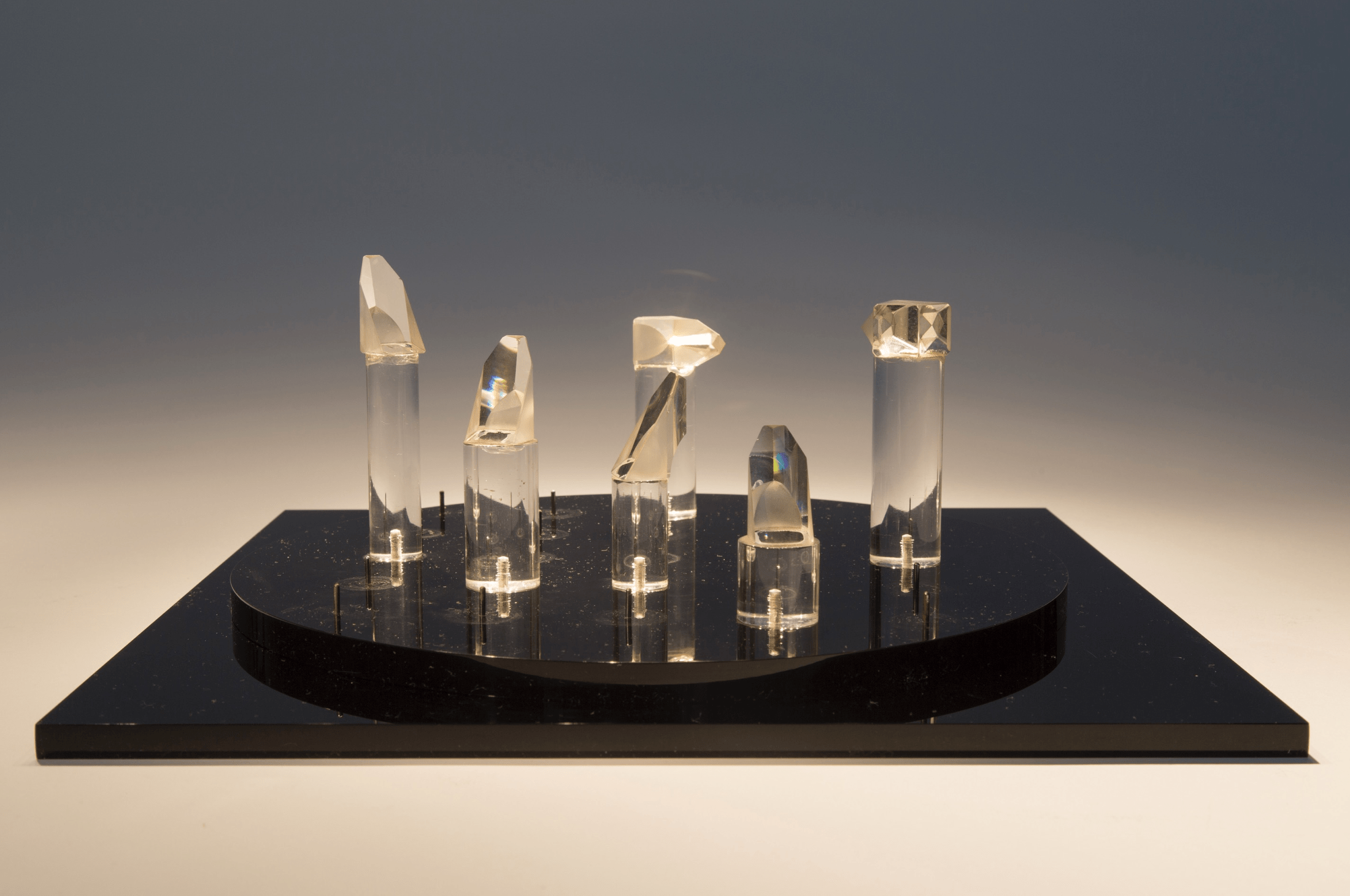
No Chess Yet, 1969
Lijn was fascinated by the use of prisms as tools for vision in both industry and war. Here were materials which were used both for destruction and creation. Not only that, they were real tools for vision, enabling people not only to see and sight from within bind boxes, but also to see within solid matter by analysing the spectrum of light given off by gases, for example in distant stars.
read more
read more
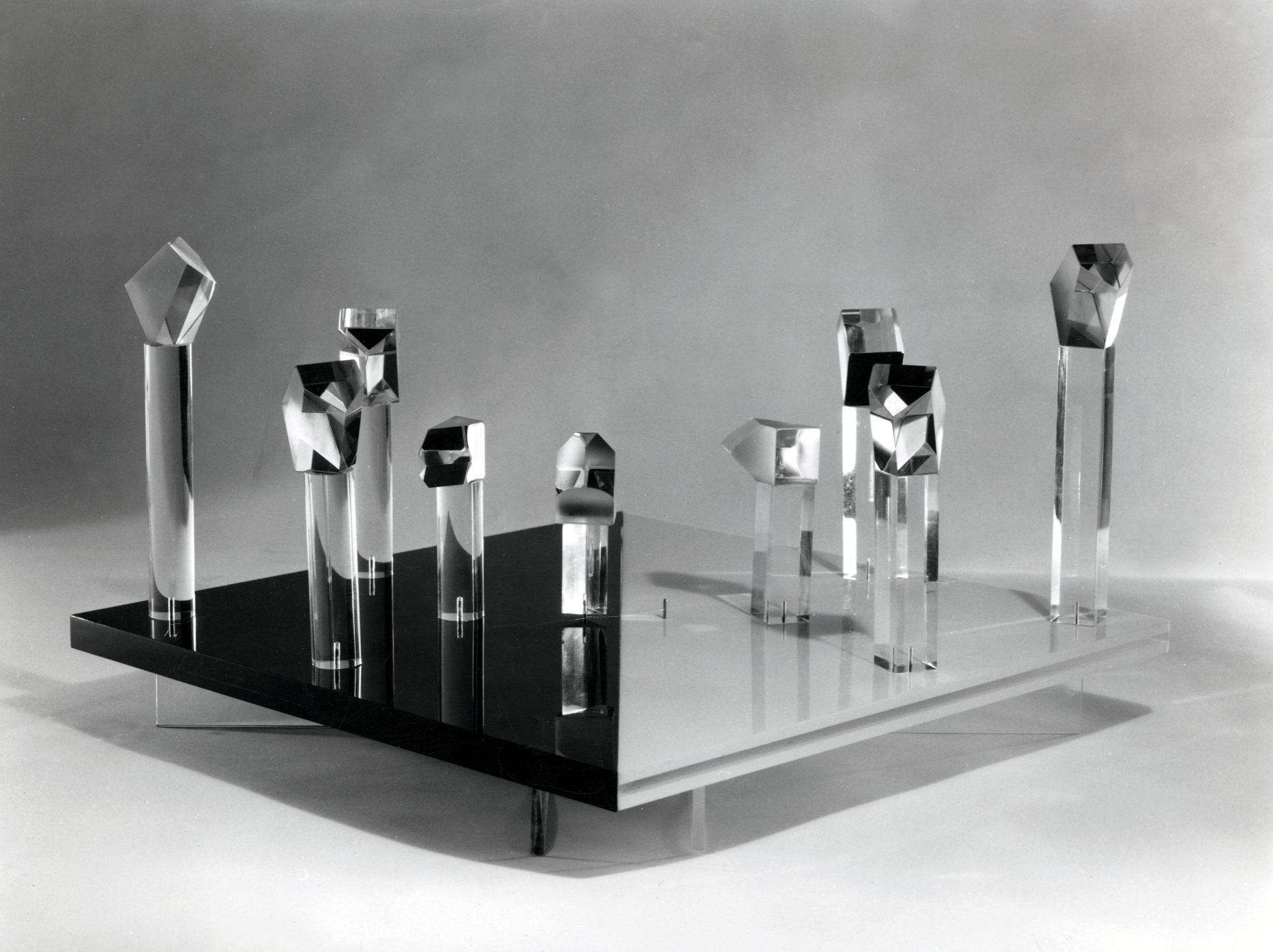
Master Switch, 1969
Lijn was fascinated by the use of prisms as tools for vision in both industry and war. Here were materials which were used both for destruction and creation. Not only that, they were real tools for vision, enabling people not only to see and sight from within bind boxes, but also to see within solid matter by analysing the spectrum of light given off by gases, for example in distant stars.
read more
read more
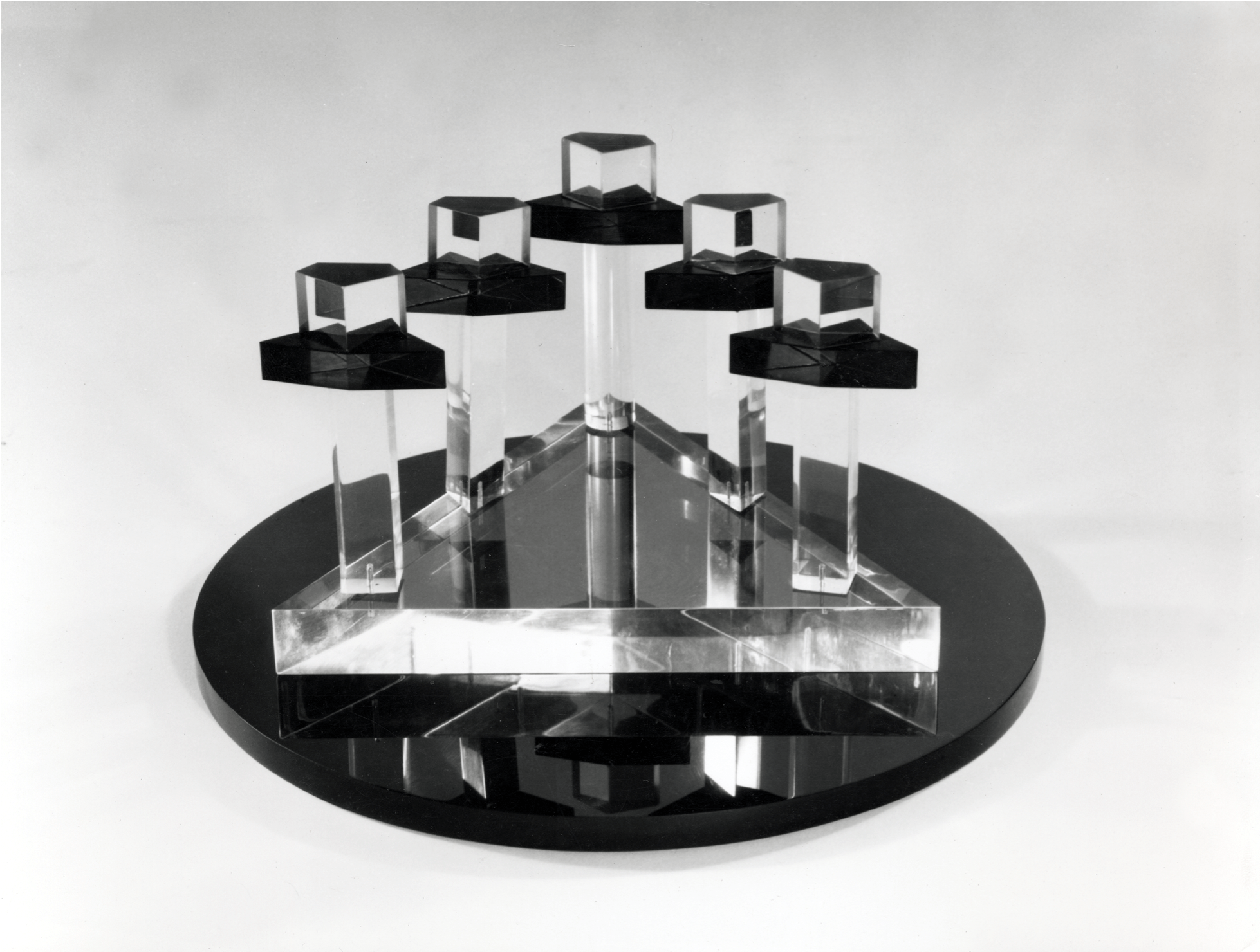
Five Point Triangle, 1969
Lijn was fascinated by the use of prisms as tools for vision in both industry and war. Here were materials which were used both for destruction and creation. Not only that, they were real tools for vision, enabling people not only to see and sight from within bind boxes, but also to see within solid matter by analysing the spectrum of light given off by gases, for example in distant stars.
read more
read more
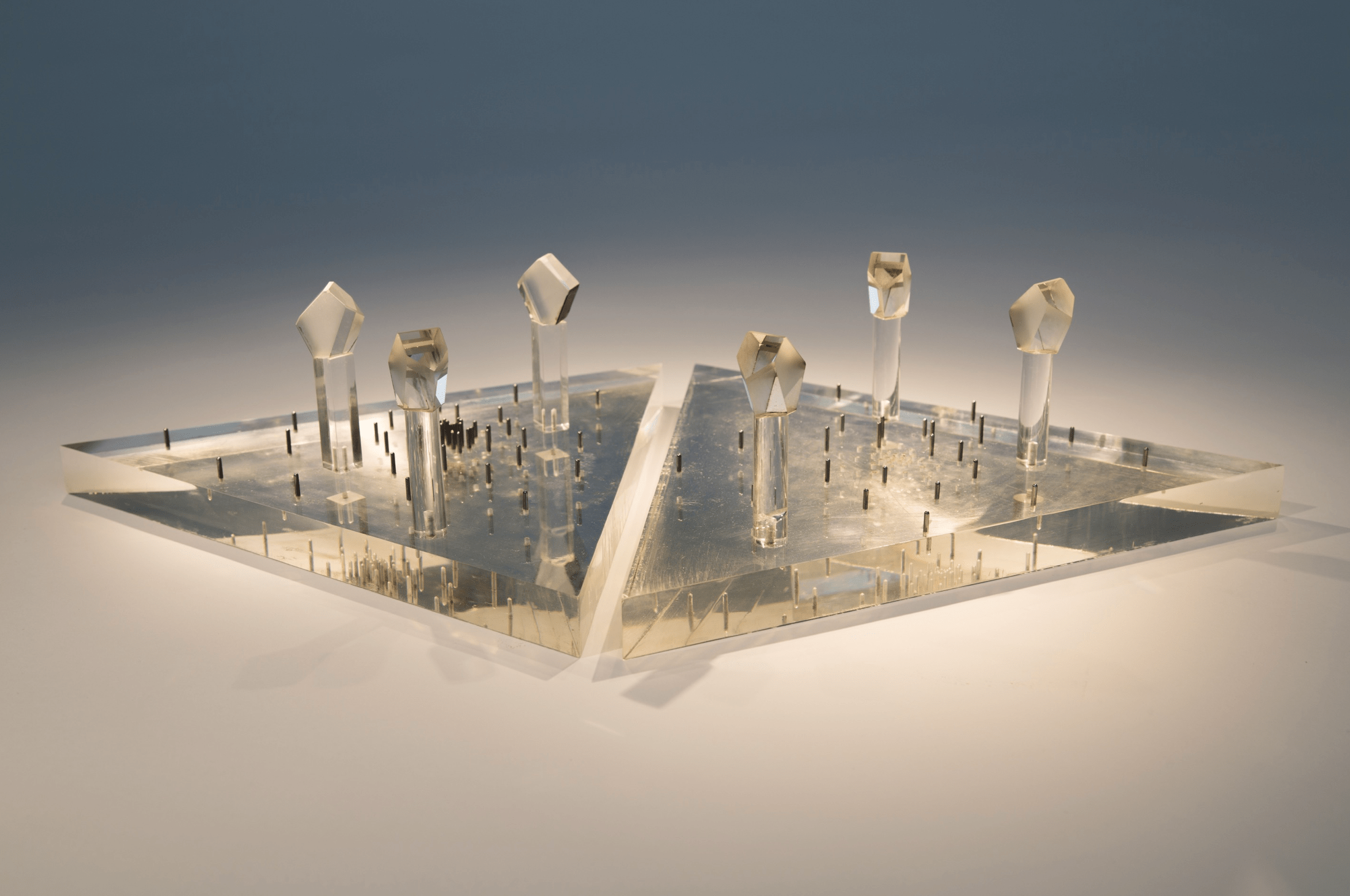
Cosmic Choice, 1969
Lijn was fascinated by the use of prisms as tools for vision in both industry and war. Here were materials which were used both for destruction and creation. Not only that, they were real tools for vision, enabling people not only to see and sight from within bind boxes, but also to see within solid matter by analysing the spectrum of light given off by gases, for example in distant stars.
read more
read more
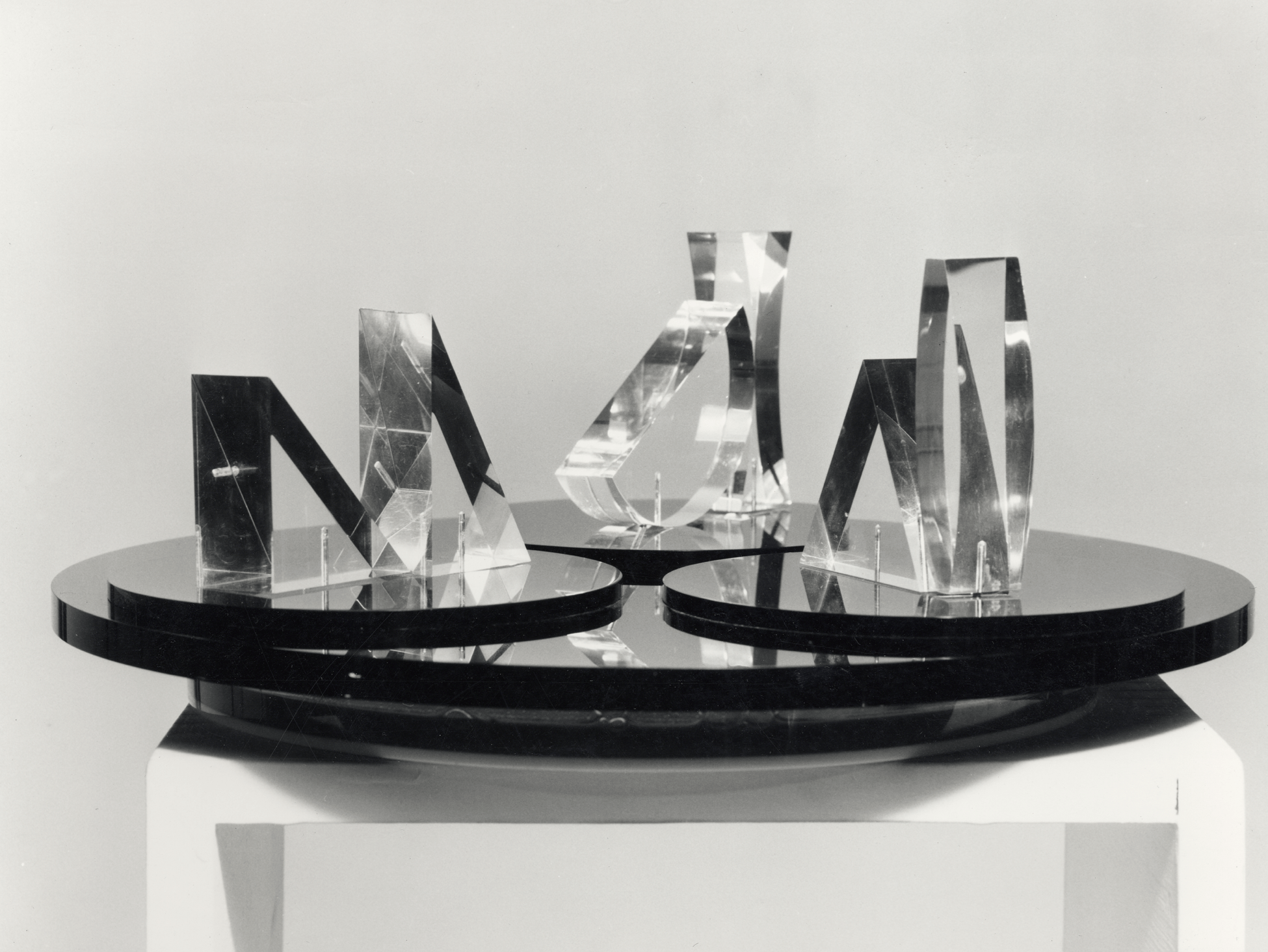
Black Gnomon, 1969
Lijn was fascinated by the use of prisms as tools for vision in both industry and war. Here were materials which were used both for destruction and creation. Not only that, they were real tools for vision, enabling people not only to see and sight from within bind boxes, but also to see within solid matter by analysing the spectrum of light given off by gases, for example in distant stars.
read more
read more
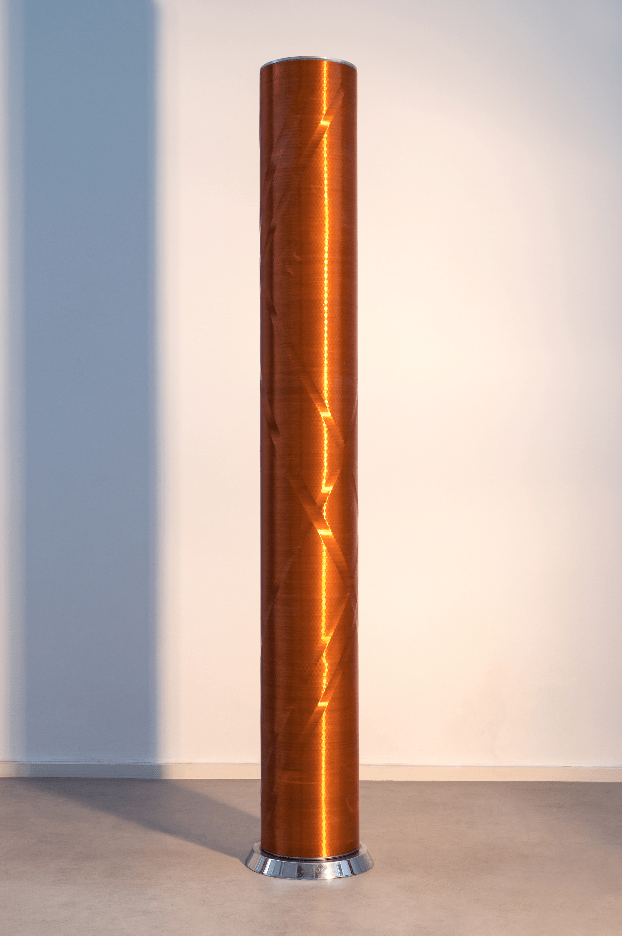
Linear Light Column, 1969
In this series of work Lijn was interested in the way a reflected line of light describes the altered surface of the cylinder.
read more
read more
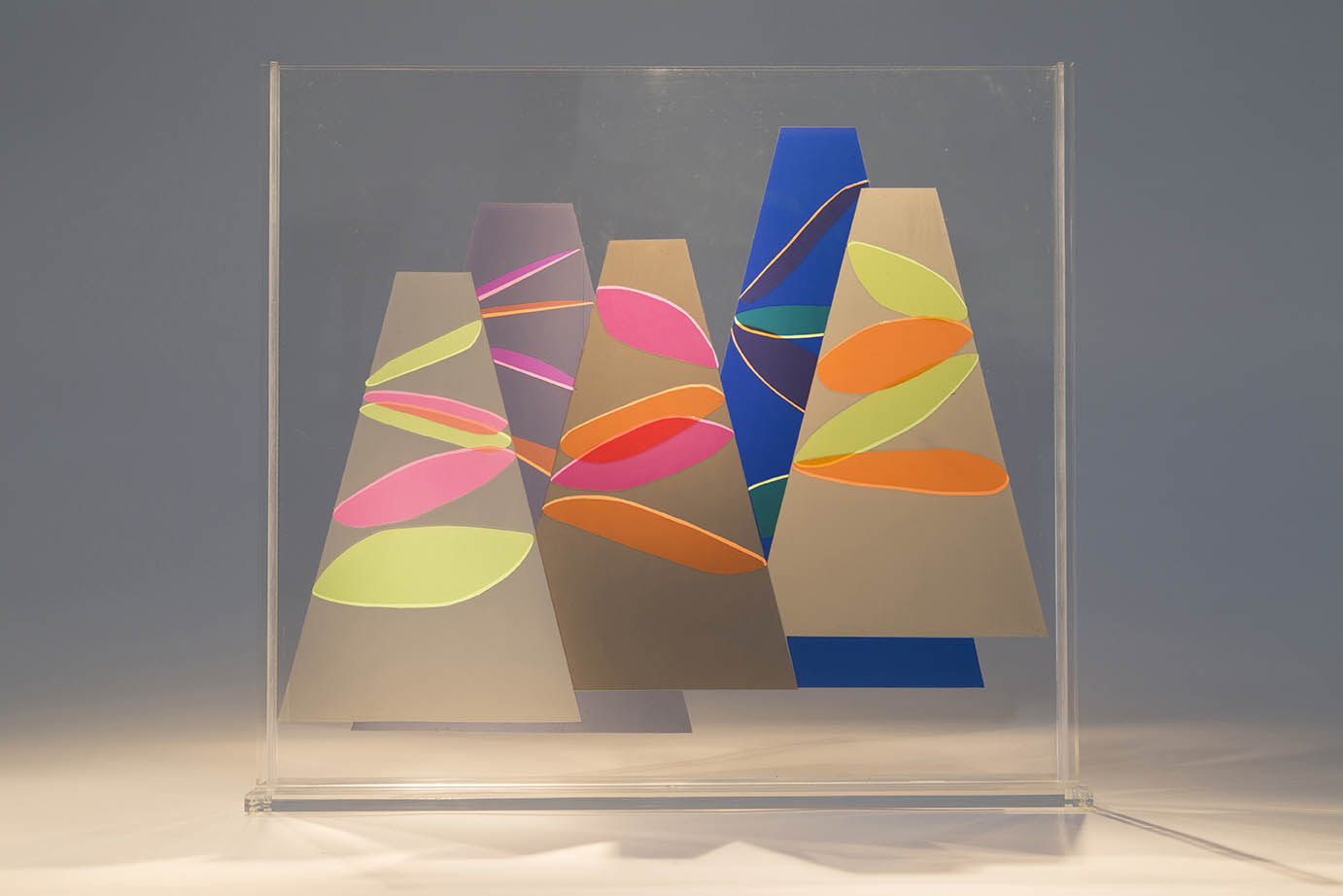
Koancuts (Letrafilm), 1969
Part of the series of works in which Lijn segmented cone forms, these translucent cut letra-film collages relate both to the larger Koan sculptures and to the Koancut silkscreen print series.
read more
read more
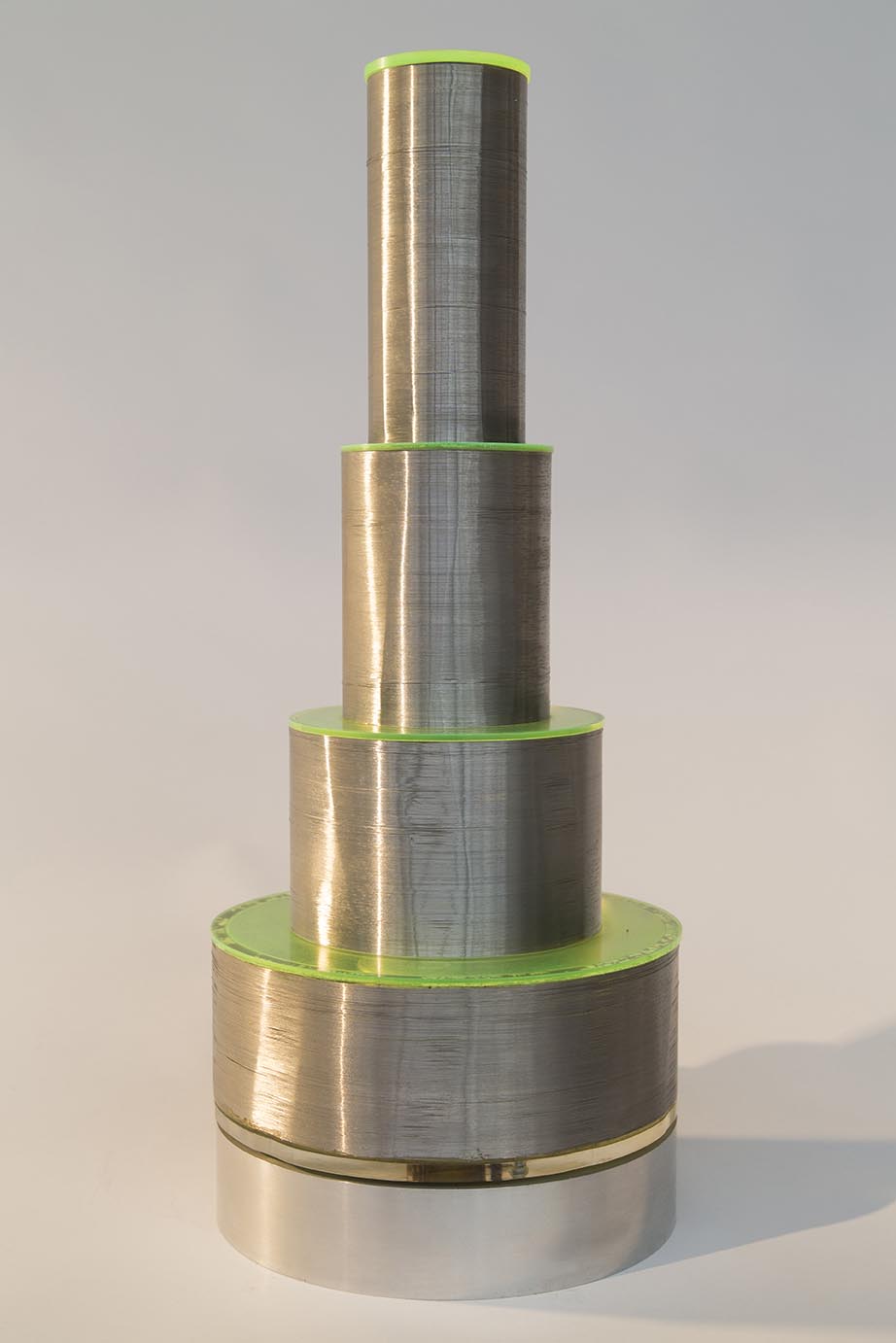
Silver Ziggurat, 1969
The cylinder revolves at a constant speed, allowing the entire surface of the form to be seen by an immobile viewer in one continuous flow.
read more
read more
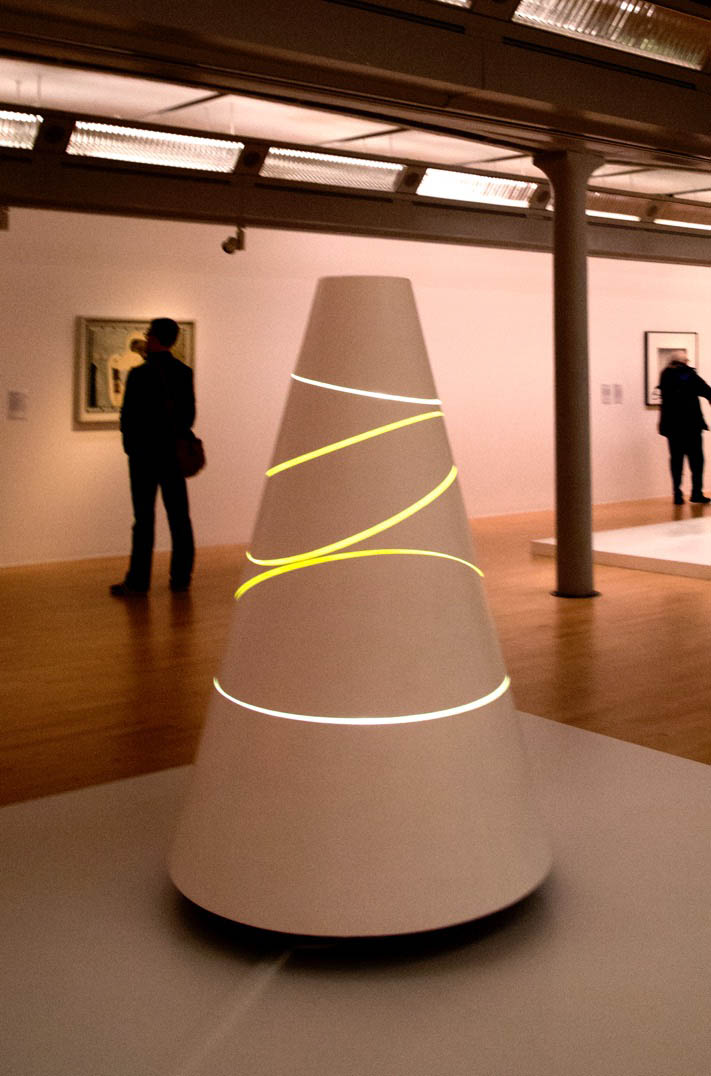
Space Displace Koan, 1969
The koan spins slowly at a constant speed; so that the viewer’s eye focuses on the lines, which in turn appear to dissolve the volume of the sculpture.
read more
read more
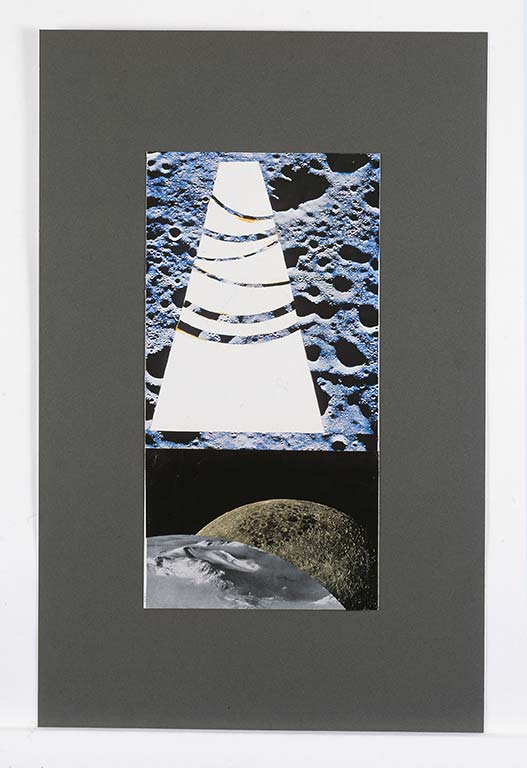
Inner Space – Outer Space – Same Distance, 1969
Lijn uses the cone as a cosmic totem, interleaving it with sections of the Earth seen from the Moon and sections of the lunar surface seen from Earth.
read more
read more
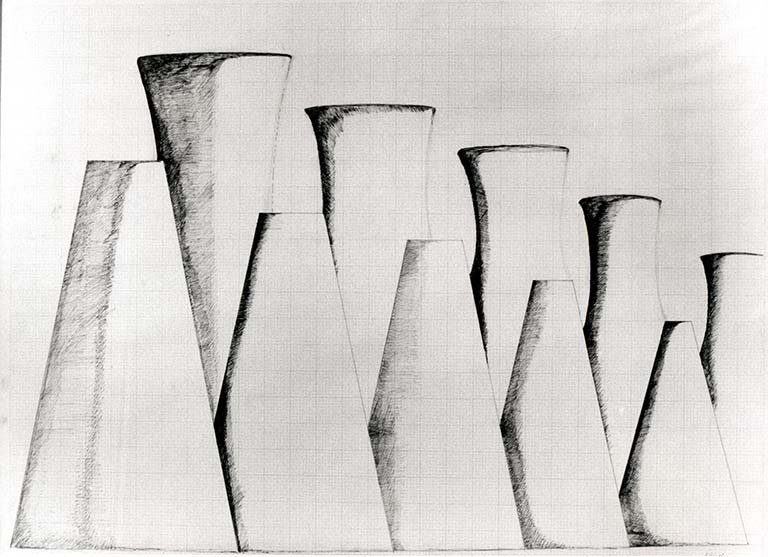
Industrial Magic, 1969
Lijn’s obsession with cones is connected to her interest in industrial cooling towers. They belong to the same family of shapes and both forms seem to be connected to energy.
read more
read more
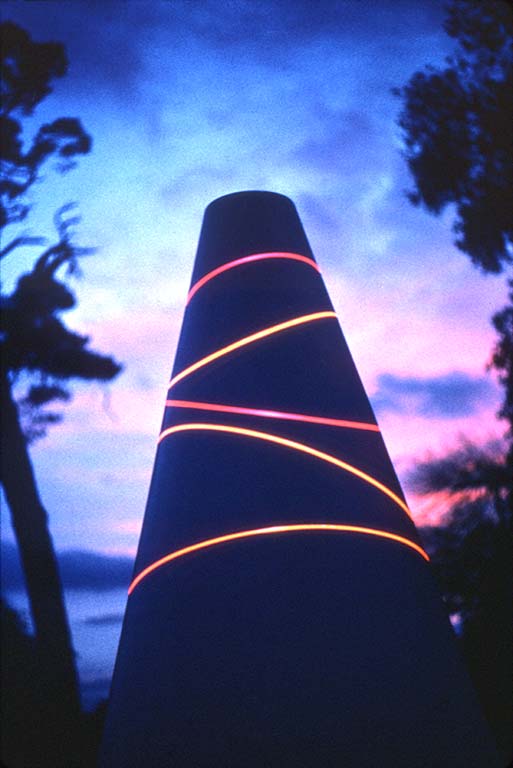
Exit Matter Koan, 1969
Koan is a Japanese word for a paradoxical riddle given to young Buddhist monks as aids for meditation. Koans are a continuous theme in Lijn’s work.
read more
read more
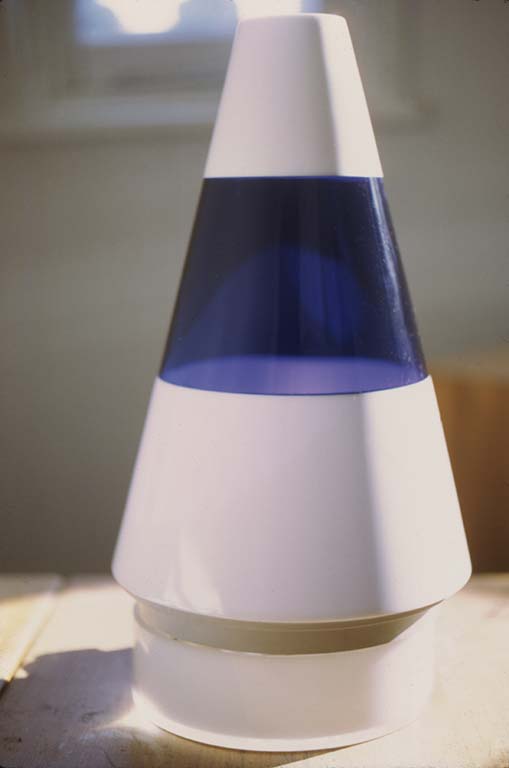
Breathing Cone, 1968
In Breathing Cone the blue area pulsates as the cone spins, slowly, as if the cone were breathing.
read more
read more
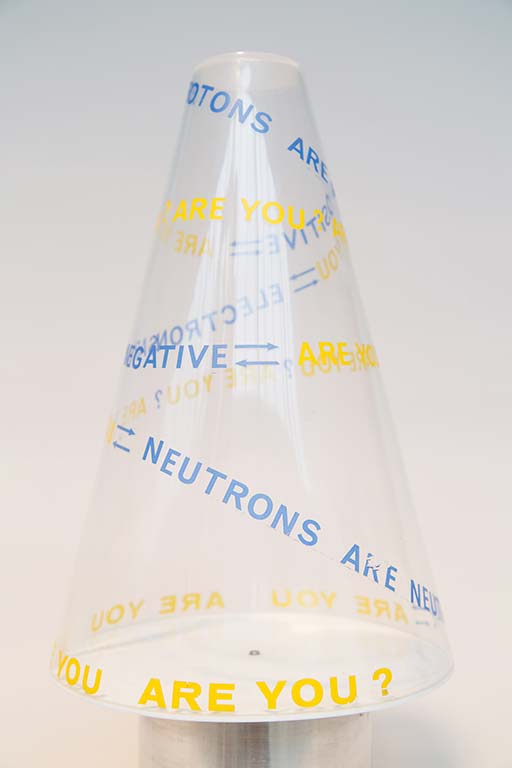
Protons Are Positive, 1968
"Words float on its almost invisible skin and spin into space." Lijn
read more
read more
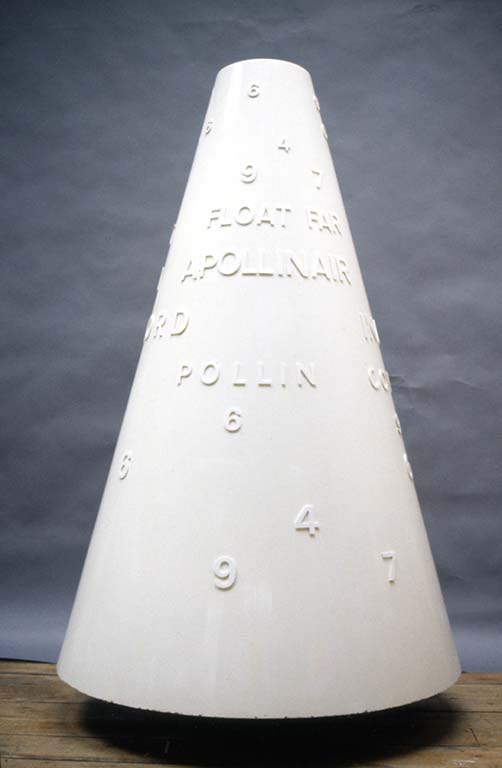
Poemkon = D = 4 = Open = Apollinaire, 1968
Commissioned for Guillaume Apollinaire 1880-1918: A Celebration, Institute of Contemporary Arts, London, 1968.
read more
read more
Liquid Reflections (Multiple), 1968
Liquid Reflections were Lijn’s first and most complex works with water and light. The Liquid Reflections series, inspired by her interest in astronomy and the physics of light, was the outcome of 5 years of experimental work with plastics and fire, acrylic polymers, lenses, prisms, light and finally water.
read more
read more